How to Know If a Dog Could Bite You
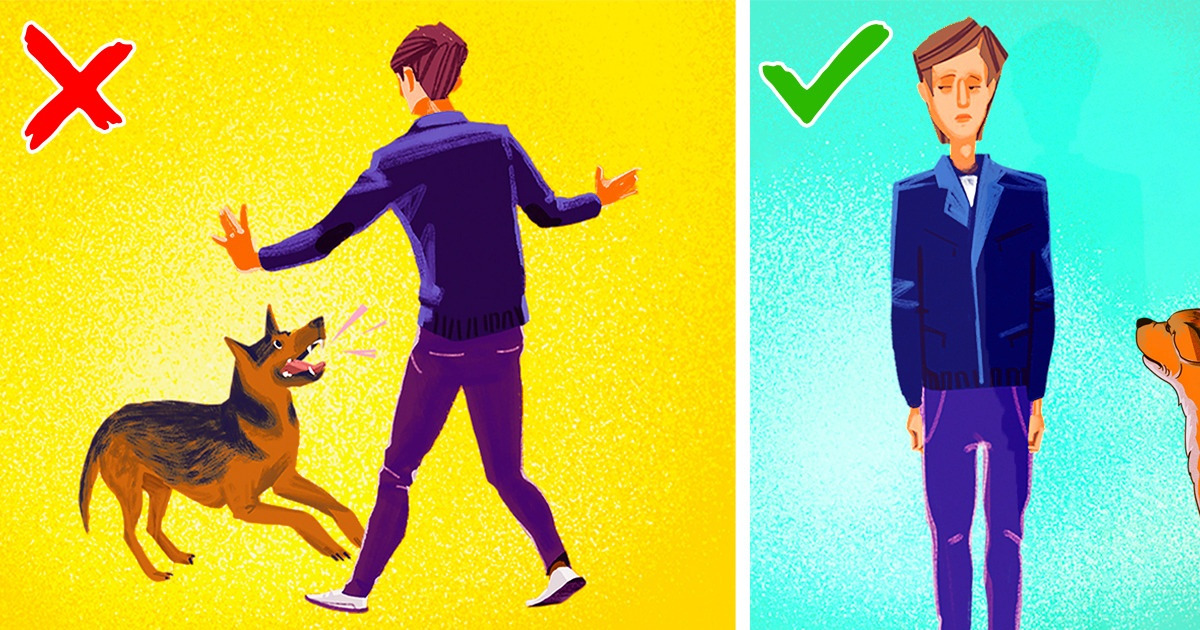
We all love dogs. When we see a fluffy puppy on the street, we may want to approach it to say hello. Contrary to what you may think, some dogs might not want to greet you back in the same manner and may show some aggression. Dogs don’t become aggressive without reason; each one has a different threshold leading them to bite. Also, any breed of dog has the ability to bite.
5-Minute Crafts prepared these guidelines for you to recognize signs and avoid such a situation before it’s too late.
❗ This article is for informational purposes only. Before taking any action, it’s strongly recommended you use your utmost caution and call professionals.
Why dogs bite
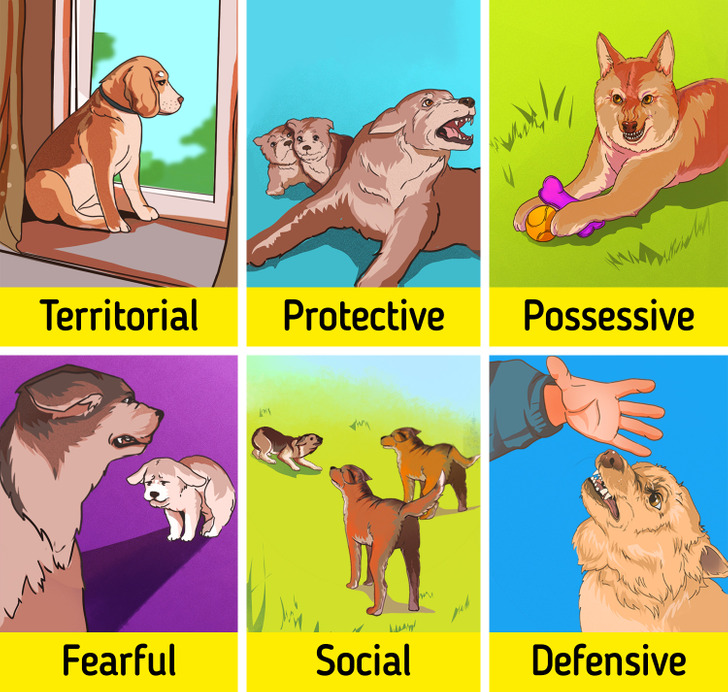
Dog bites often signal that they are uncomfortable, stressed, or threatened by something. There are plenty of reasons why our furry pals use their teeth to communicate their fear, anxiety, pain, or predatory instincts due to their prey behavior or territorial acts. Whatever the reason is, it’s essential to work on the warning signs and find a solution to each signal.
For example, it’s not a good idea to touch a sleeping dog, as it may suddenly get startled and show aggression or fear. It could also be that your furry pal is stressed or doesn’t feel well, and you’ve touched some part that hurt them. Dogs also need space when they’re elderly, ill, recovering, nervous, or unhappy in a new environment. In most cases, a dog will bite as a last resort to stop something unpleasant from happening.
1. A dog suddenly starts growling and snapping.
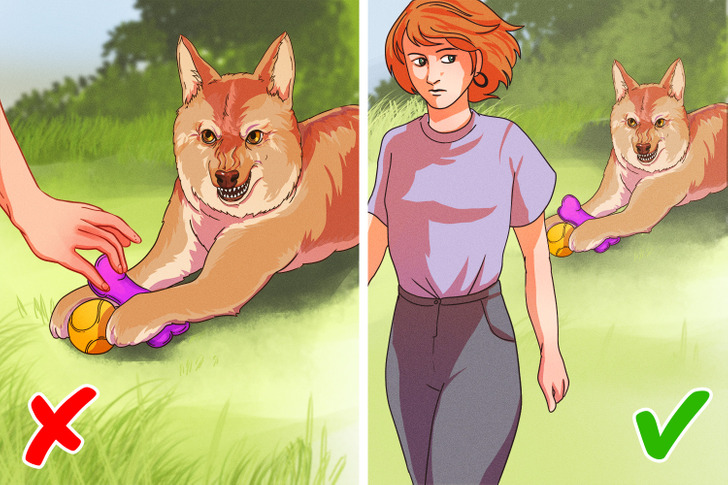
Dogs growl when they’re in a new environment or if they feel uncomfortable or threatened due to some pain or injury. Therefore, you need to observe closely why your dog is ceaselessly moving around, showing its teeth, or growling, as it’s a sure sign that the furry pal may bite.
What to do: It’s essential to assess the situation first and understand what is making the dog uncomfortable. If it growls over a toy or guards its food, it’s better not to attempt to take it from the dog. Also, ensure it doesn’t come in close contact. Slowly back off and give the furry pal some space to calm down.
2. A dog is wagging its tail toward the left.
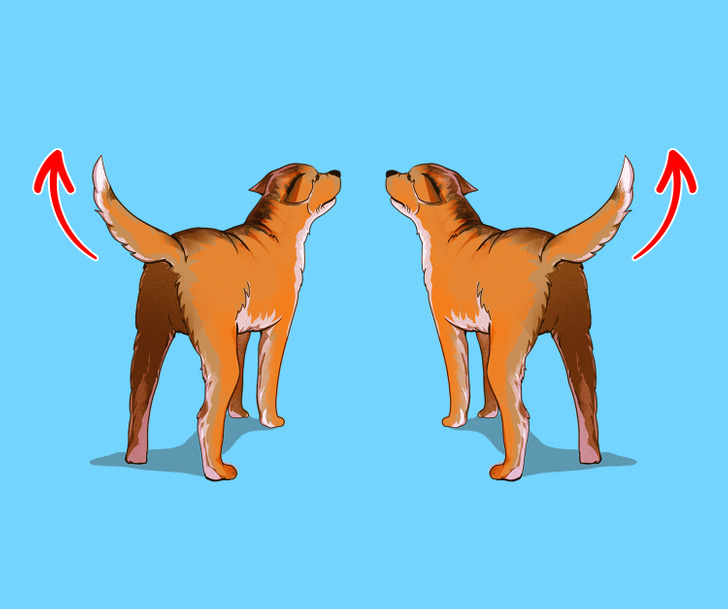
Our furry friends wag their tails when they’re happy. They also wag it when they’re perturbed. When this is the case, it’s good to assess your dog carefully and see whether its tail is rigid, pointed high, hidden between the legs, or moving back and forth. When a dog is relaxed, its tail sits in a resting position, whereas an aggressive dog has a stiff or vertical tail. Also, a dog wagging its tail to the right means it’s relaxed, whereas a stressed dog wags to the left.
What to do: Observe how it’s wagging its tail. When a dog is happy, it moves as if it’s dancing. The wag is quick and rigid in other circumstances, and the body stays still. It’s better to give some space to your pal.
3. A dog has raised fur.
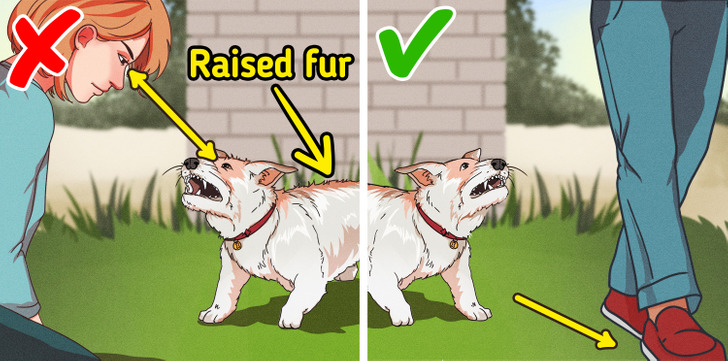
Like humans, when our furry pals are overly stimulated, angry, or scared of something, their back or neck hair rises. Also, the standing fur may differ from one dog to another.
What to do: When you see their hair is standing, it means the dog isn’t happy with you or the situation. It’s a telltale sign for you to back off.
4. A dog has a rigid posture.
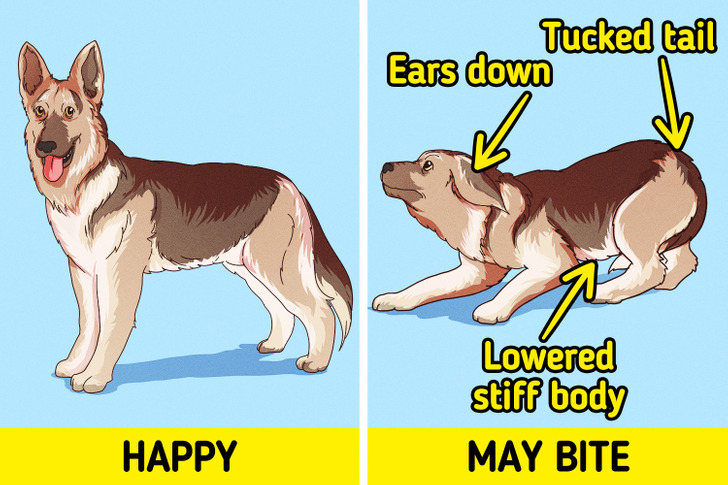
While a comfortable and happy dog has a relaxed body and a wagging tail, we see just the opposite posture in a dog that has a fearful aggressive stance. A frightened dog has a lowered body with a low tail tucked between its legs, whereas an aggressive dog has a stiff and rigid body with a raised tail. When the dog feels an intense threat, it lowers its body posture to protect its throat during an attack.
What to do: It is excellent to understand your dog’s body language. See if it gives away any sign of uneasiness. Regardless, make sure you use caution, move away, and give the dog some space. You can calm it down with your voice.
5. A dog has visible eye scleras (whites).
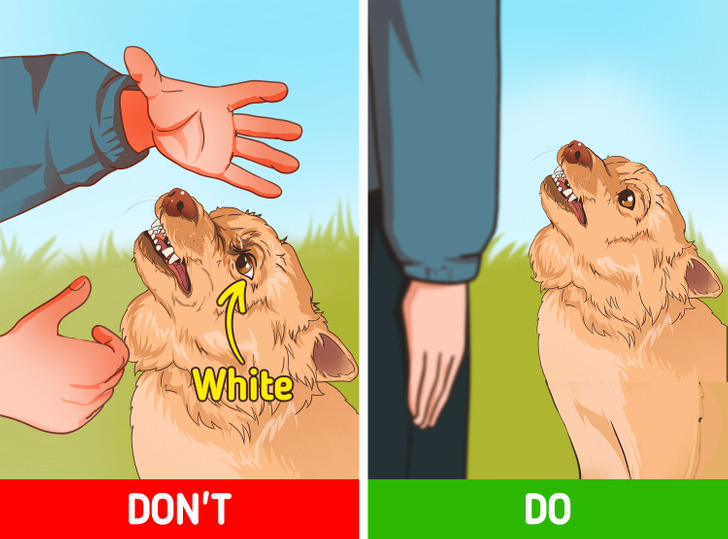
The white part of a dog’s eye isn’t noticeable in happy dogs. When you see the whites are on full display, it may be a sure sign that the dog feels threatened. Also, when dogs feel threatened, their eyes will be on the potential threat or target most of the time regardless of whether they move their head a bit.
What to do: It is better to avoid direct eye contact, step back to keep your distance, and give the dog space.
6. A dog is yawning and lip-licking.
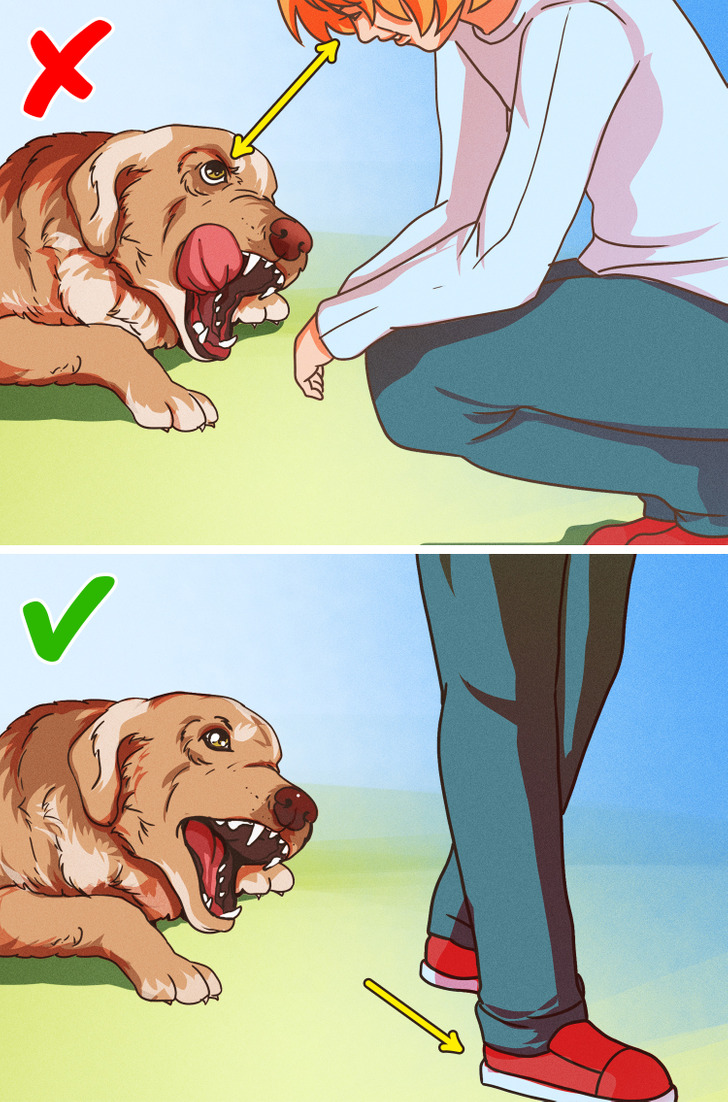
Let’s not forget that dogs feel stressed too. When dogs feel uncomfortable, anxious, or unsettled, they show several symptoms to give away the information about how they think. When a dog yawns, looks away, drools, or licks its lips, it’s a telltale sign that it may resort to biting.
What to do: If you see a dog yawning and looking away when you approach, be cautious and allow it to find an escape route from the situation.
Bonus: How you need to interact with a dog safely
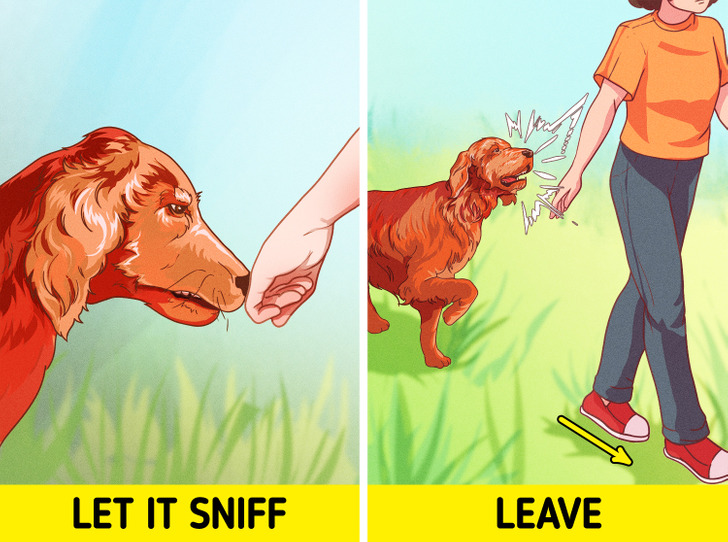
Training dogs can prevent the possibility of biting. Still, it’s essential to know how to interact with a dog.
- Always ask for the owner’s permission before touching or approaching a dog that is not yours. Make sure not to put your face close to an unknown one. If you meet an unfamiliar dog and it wants to sniff your hand, let it sniff your fist.
- Stay away from an injured dog or one that is eating, sleeping, or caring for its babies.
- It’s good not to leave a young child or a baby alone with a dog.
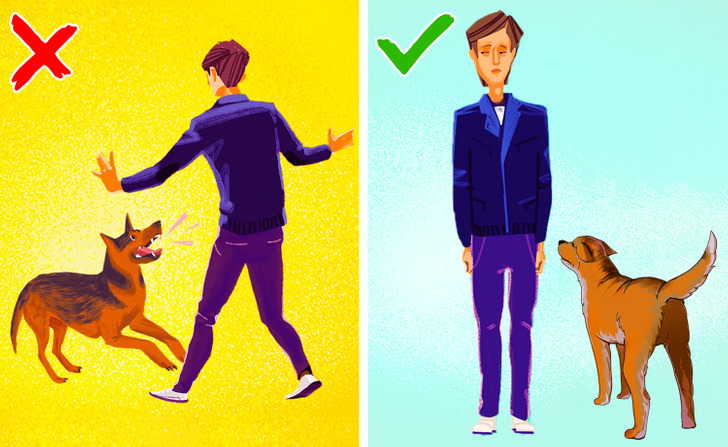
- In cases where you feel cornered by an unfamiliar dog, stay still but calm, avoid eye contact, and don’t run or scream. When you think it’s not paying attention to you, you can move back slowly.
- If you get cornered by a dog, remain calm and still. It’s better to get into a fetal position on your side and cover your head and face. If a dog bites you, inform the local authorities of the incident immediately and seek medical help.